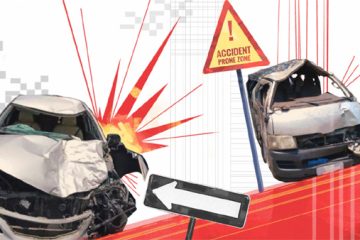Several thousands people irrespective of cast, creed and faith of old Dhaka, the most densely populated area in the capital city, lead their daily lives amid fire risks from the crowded chemical factories and shops and workshops that line the streets of Sutrapur, Lalbagh, Kotwali, Bangla Bazar, Bangshal, Armanitola, Hazaribagh, Siddique Bazar, Nayabazar, Begum Bazar, Tantibazar Nawabpur, Gendaria and Islampur. Most of the small industries and machine shops, full of hazardous chemicals, inflammable materials, unprotected fire sources and faulty gas and electric lines, operate out of street-level floors of residential buildings, and open straight to densely populated crowded lanes and alleys.
At least 140 people, mostly women and children were killed and 200 others injured in a deadly fire at Nimtoli of Nawab Katara in Old Dhaka on June 3, 2010 night.
Even after the tragic incident hundreds of chemical warehouses are still housed in the old part of Dhaka, leaving residents of the locality vulnerable to fire accidents.
After the Nimtoli tragic inferno, the government had taken an initiative to remove all the chemical storehouses and factories from residential areas and conducted drives by mobile courts. But the drives stopped after a few days for inexplicable reasons.
Following repeated requests from businessmen, the government halted the operations of the mobile court for two months and directed the owners to shift their warehouses and factories from residential areas by September 30, 2010.
After the deadline passed, the mobile court conducted several drives in the area but the scene hardly changed.
During a visit to Old Dhaka on the 3rd anniversary of the tragic incident on Monday, The Independent reporter talked with some 25 to 30 residents and traders of Old Dhaka and found many chemical warehouses at Nawab Katra, Mahuttuli, Bangshal, Siddique Bazar, Sat Rowza, Babu Bazar, and Armanitola.
According to the Fire Service and Civil Defence authorities, most of the deadly fire incidents in Old Dhaka took place due to commercial establishments on the ground floor of the residential buildings.
At least 10 people were killed in a fire originating from a chemical shop on the ground floor at a house in Aga Sadek Road on August 3, 2008 night.
At least 30 houses were gutted in a fire that spread from a shoe factory in east Islambagh of Lalbagh area on December 4, 2008 evening.
According to Bangladesh Environment Conservation Rules 1997, no industry can operate in and around a residential area using hazardous chemicals or goods; and the factory owners must have environmental clearance certificates before they can use the materials.
A resident of Nimtoli area, who is also an employee of a private firm Gulshan area, told The Independent, “We are living in panic, as the existing chemical storehouses may cause incidents like Nimtoli again.”
Some families have already left the area fearing further accident, he said.
Another resident of the area said many house owners had rented out their facilities to warehouses secretly to make more money and avoid people’s wrath.
Fire Service and Civil Defence deputy director (operations) Bharat Chandra Biswas, who supervised the Nimtoli fire, told The Independent, “The risk of lethal fires has increased as more and more makeshift factories set up shops in the crowded residential areas.”
“In the old part of the city, fire risks are high at Sutrapur, Lalbagh, Kotwali, Bangla Bazar, Bangshal, Armanitola, Hazaribagh, Siddique Bazar, Nayabazar, Begum Bazar, Tantibazar Nawabpur, Gendaria and Islampur,’ Biwas said.
“Fire service trucks, with water, hoses, ladders and other necessary rescue equipment, cannot reach fires in the narrow lanes in town,” he said adding that the buildings in the area are tightly packed.
“People living above plastic factories or chemical shops that emit toxic smoke if there is a fire, are at high risk because of poor ventilation,” Biwas added.
During the Nimtoli fire it was seen that dozens of residents, trying to leave the buildings, could not walk down stairs as they consumed lethal fumes.
Rescue workers rescued them from staircases and others parts of the building, as the blaze blocked the exit on the ground floors of most of the buildings.
-With The Independent input




















